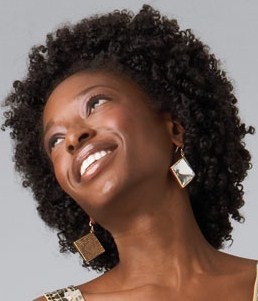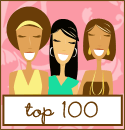Posted on Tuesday, May 5th, 2009 at 1:14 pm
By Azara

Chemicals relaxers and hair coloring are very damaging to the hair. These products cause extensive breakage and hair damage to a lot of women, so in order to revert the damages of these products, it is best to let one’s hair grow natural. Deciding to let your hair grow naturally can be very frustrating and intimidating at first, but overall rewarding. There are lots of benefits in letting your hair grow naturally; one being that you pay attention to what your hair NEEDS, while another benefit is that natural hair grows faster and tends to be healthier due to the absence of chemical relaxers and processors.
Thinking about going natural?
Below are some tips on growing your hair naturally.
1.
THINK before you PLUNGE!
a. If you are thinking about growing your hair naturally, it is important to remember to transition slowly. Going natural is not just about “cutting” your hair, you need to do your research first and learn new concepts associated with growing your hair naturally.
b. One of the most important things to do is to know and understand your hair structure, because often times what works for others will not necessarily work for you.
2.
Cut your PERMa. The first step to growing your hair naturally is to cut off parts of your hair that have been chemically treated, because the part where your natural hair meets with your chemically treated hair is a weak point that leads to a lot of breakage.
3.
Pick your Transition Stylea. Depending on the length of your hair, as well as your level of comfort, you can choose to either leave your hair as it is, or wear tiny twist or afros. If you are looking for more versatility in terms of styling, you can wear your hair in braids or full weaves, while waiting for your natural hair to grow to your desired length.
b. Other transition styles include Sister Locks that are similar to dreadlocks.
4.
Shampoo with CAREa. It is important that you use proper products to shampoo your hair, most commercial products contain harmful chemicals that strip your hair of its natural oil, leaving it dry and brittle.
b. Be sure to read the ingredients of your shampoo and stay clear of products that contain sodium sulphate because they tend to cause irritation on both skin and eyes.
c. Frequent shampooing of the hair is not necessary, natural hair needs to be washed when it
starts feeling “greasy”, because of the accumulation of the hair’s natural oil and dirt.
d. One of the best alternatives to harmful shampoos is to mix baking soda with a cup of warm water, spray it on your hair and massage. One of the reasons why baking soda works as a great shampoo alternative, is because it acts as a natural cleansing agent that is gentle on both hair and skin.
5.
Don’t forget to MASSAGEa. Massaging your scalp helps in promoting blood circulation, which is vital in promoting hair growth.
6.
Always CONDITIONa. This is essentially the key to healthy hair, because conditioning repairs all the damage done to the hair while shampooing and styling. It is important to remember that natural hair is delicate and needs lots of moisture and PROTEIN, so conditioning with protein-based products help in coating your hair with moisture. It is also important to develop a habit of conditioning your hair at least once a week, and deep conditioning at least once a month. Be especially sure to look out for products that contain Aloe and Rosemary because they work well to stimulate growth.
7.
Remember to MOISTURIZEa. Natural hair is very prone to dryness, and adding moisture is an effective way to ensure that your hair stays healthy.
b. When looking for great hair moisturizers, stay CLEAR of products that contain mineral oil and petroleum jelly because they clog up the pores on your scalp, which hinders hair growth. Be sure to look for products that are water-based such as glycerine, because water acts as a good moisturizer.
c. Other great moisturizers include natural oil like that of coconut oil, Shea butter, avocado and mango butter.
d. Serums also work best to control hair frizz and maintain hair luster.
8.
Stay away from HEATa. Be sure to stay away or LIMIT the amount of heat you put on your hair. The constant stretching and pulling that occurs to your hair, along with the heat of a blow dryer, damages your hair’s elasticity. If you are still adamant on using heat be sure that it is below 150 degrees, to prevent the cuticle layer from burning.
9.
Comb with carea. The Key to preventing hair breakage while combing your hair is to use a good hair detangler with a wide tooth comb. Combing hair when damp also helps to ensure that you put minimal stress on both your scalp and hair. Be sure to take your time when combing to prevent hair breakage.
10.
PROTECT your HAIRa. Be sure to protect your hair while you sleep by wrapping it with a silk scarf, this helps to promote luster while decreasing split ends that also occurs with natural hair.
11.
ALWAYS TRIMa. Just like in relaxed hair, split and damaged ends also occur in natural hair. Split and damaged ends will hinder hair growth in relaxed hair as well as natural hair. In order to ensure that your hair grows properly, be sure to trim it regularly; this reduces the amount of damage done to the hair.
Most importantly, if you are confused about maintaining your natural hair, be sure to seek the expertise and advice of a natural hair specialist, to ensure that your hair is in GOOD hands.
Good Luck!
The original article can be found at
http://www.bellanaija.com/2009/05/05/go-natural-with-ease/













.png)













.png)


































